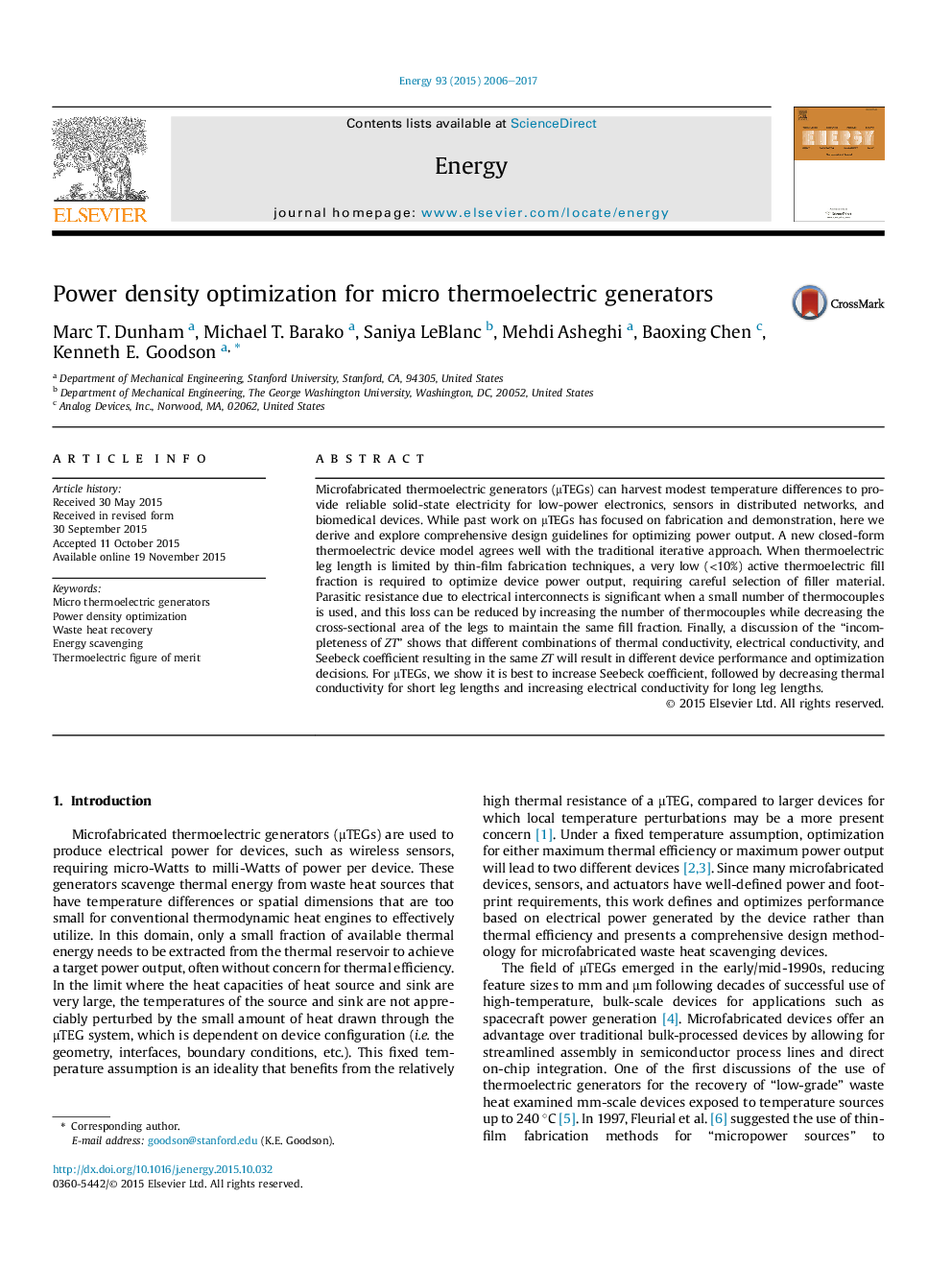| کد مقاله | کد نشریه | سال انتشار | مقاله انگلیسی | نسخه تمام متن |
|---|---|---|---|---|
| 1731639 | 1016095 | 2017 | 12 صفحه PDF | دانلود رایگان |
• An accurate closed-form model for thermoelectric generator analysis is presented.
• Optimization of thermoelectric power output by device fill fraction is discussed.
• Design for a large number of thermocouples reduces parasitic interconnect losses.
• A lower ZT can give more power output with proper optimization than high ZT.
Microfabricated thermoelectric generators (μTEGs) can harvest modest temperature differences to provide reliable solid-state electricity for low-power electronics, sensors in distributed networks, and biomedical devices. While past work on μTEGs has focused on fabrication and demonstration, here we derive and explore comprehensive design guidelines for optimizing power output. A new closed-form thermoelectric device model agrees well with the traditional iterative approach. When thermoelectric leg length is limited by thin-film fabrication techniques, a very low (<10%) active thermoelectric fill fraction is required to optimize device power output, requiring careful selection of filler material. Parasitic resistance due to electrical interconnects is significant when a small number of thermocouples is used, and this loss can be reduced by increasing the number of thermocouples while decreasing the cross-sectional area of the legs to maintain the same fill fraction. Finally, a discussion of the “incompleteness of ZT” shows that different combinations of thermal conductivity, electrical conductivity, and Seebeck coefficient resulting in the same ZT will result in different device performance and optimization decisions. For μTEGs, we show it is best to increase Seebeck coefficient, followed by decreasing thermal conductivity for short leg lengths and increasing electrical conductivity for long leg lengths.
Journal: Energy - Volume 93, Part 2, 15 December 2015, Pages 2006–2017
